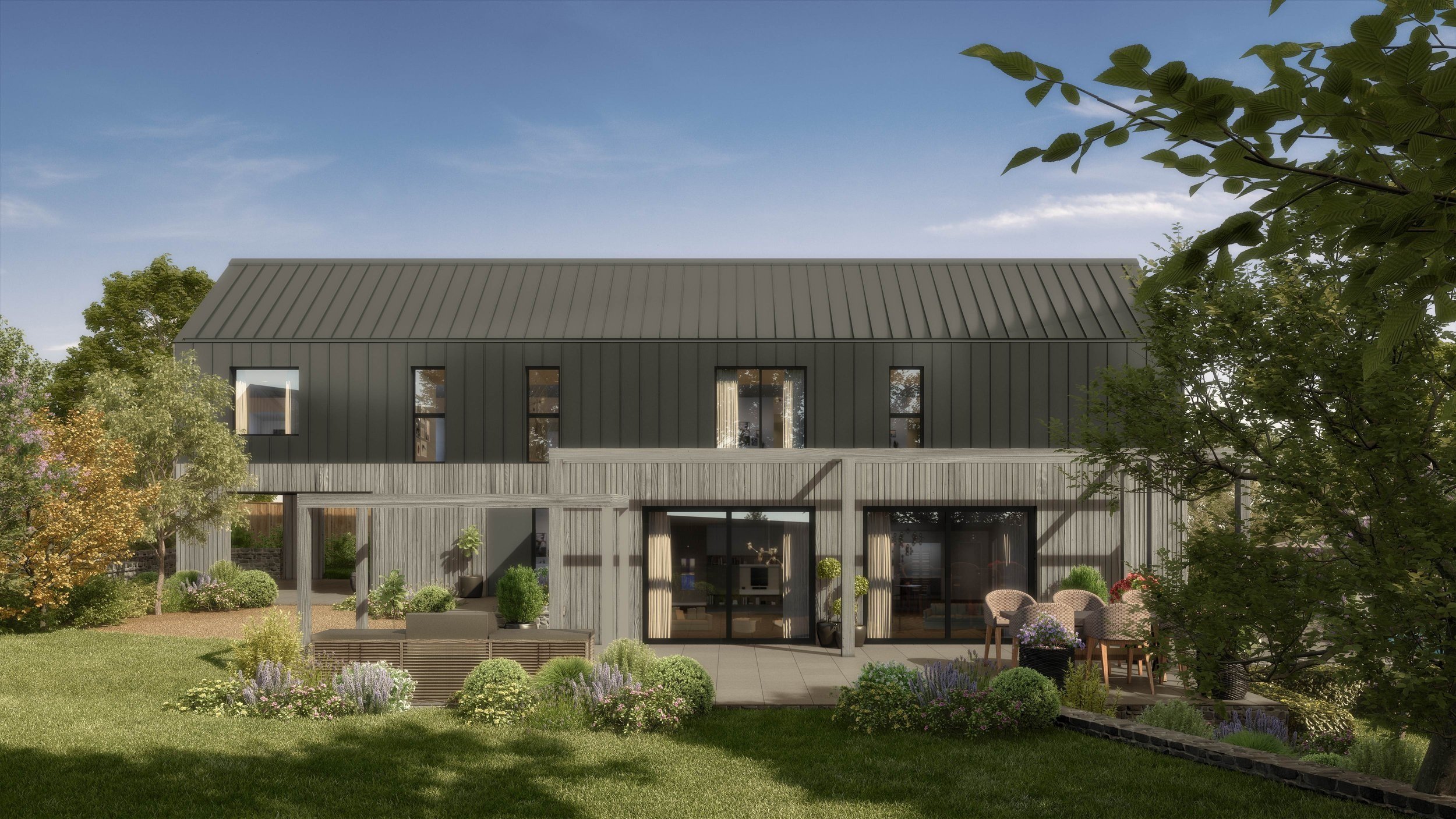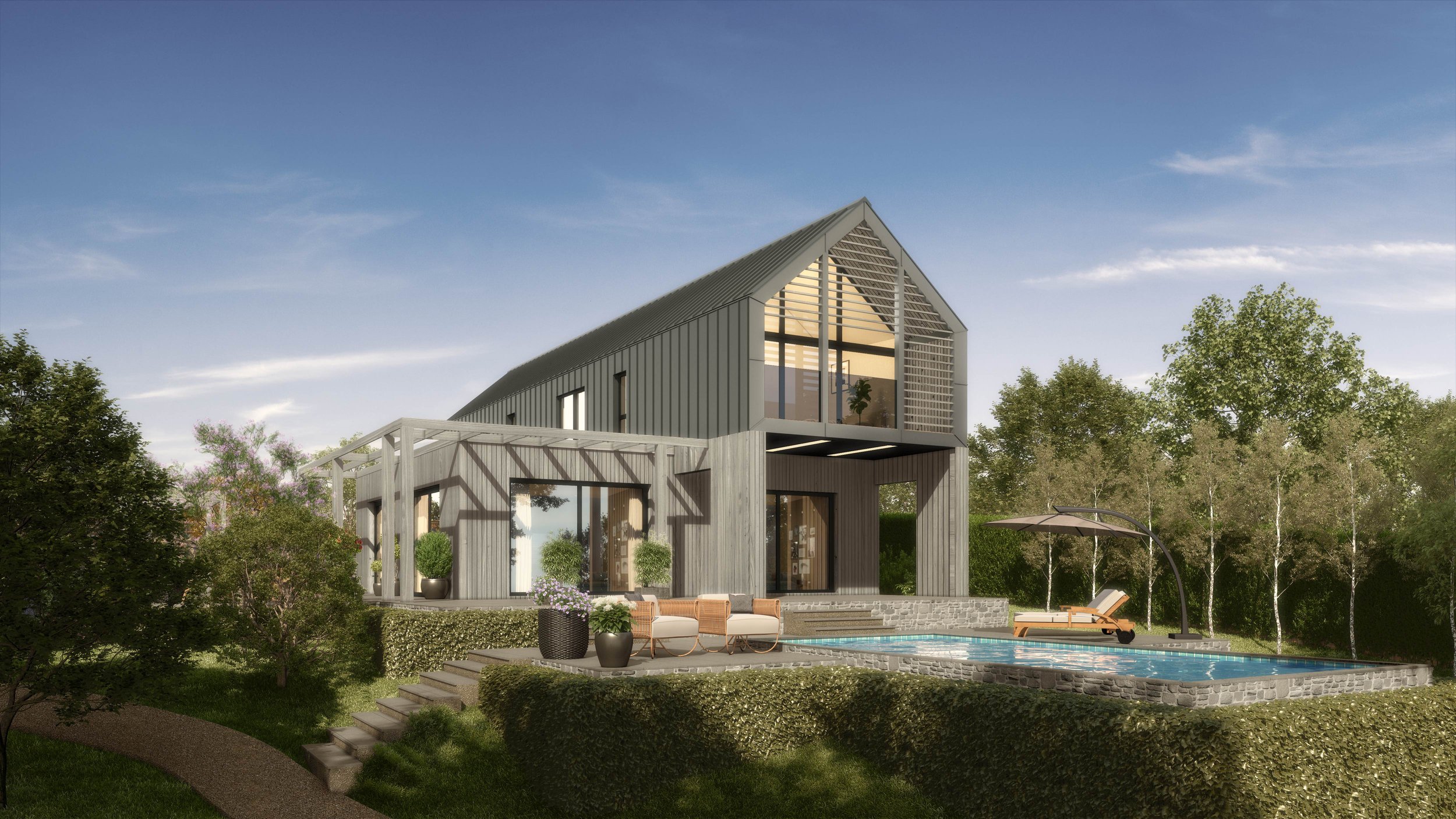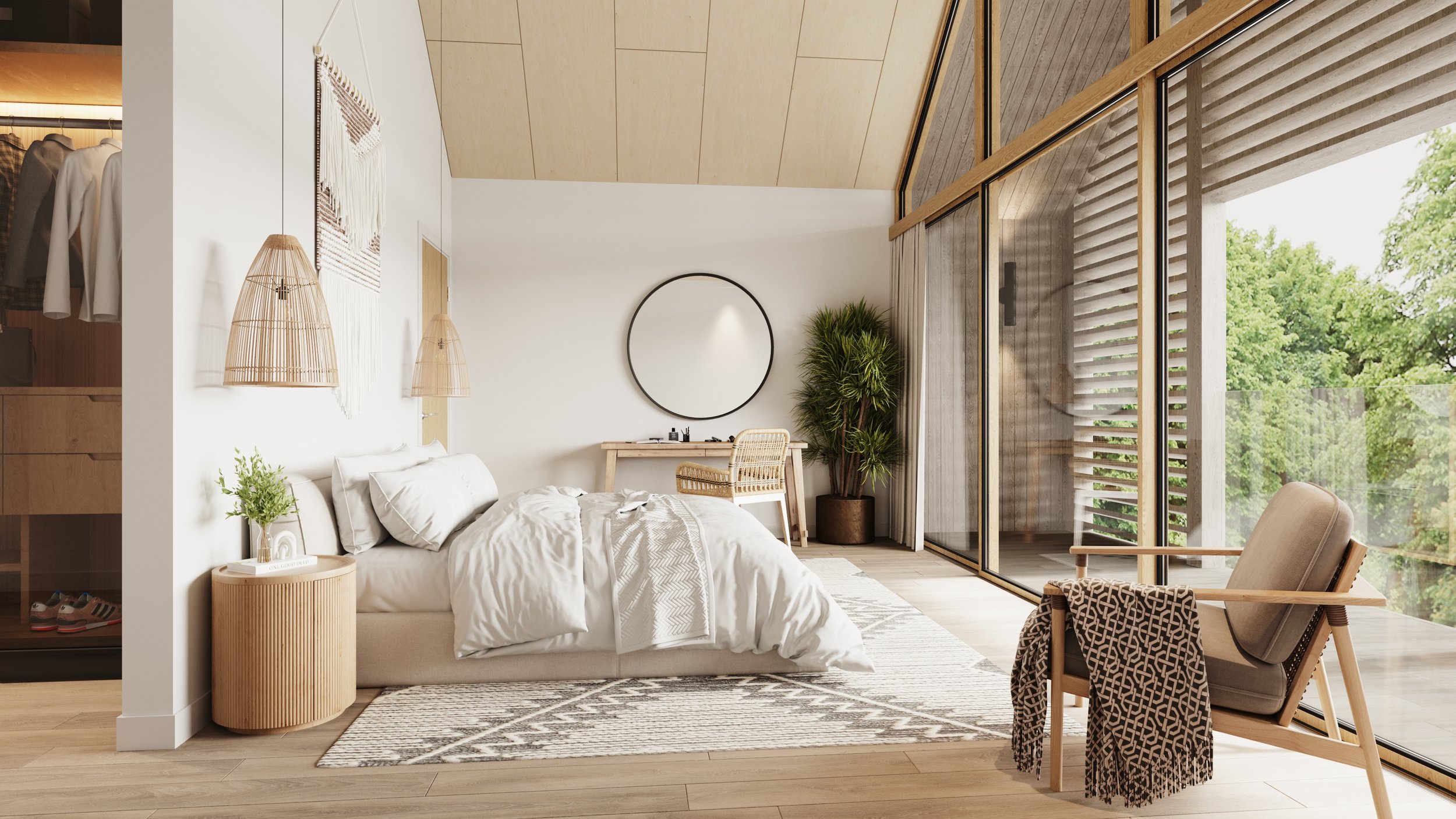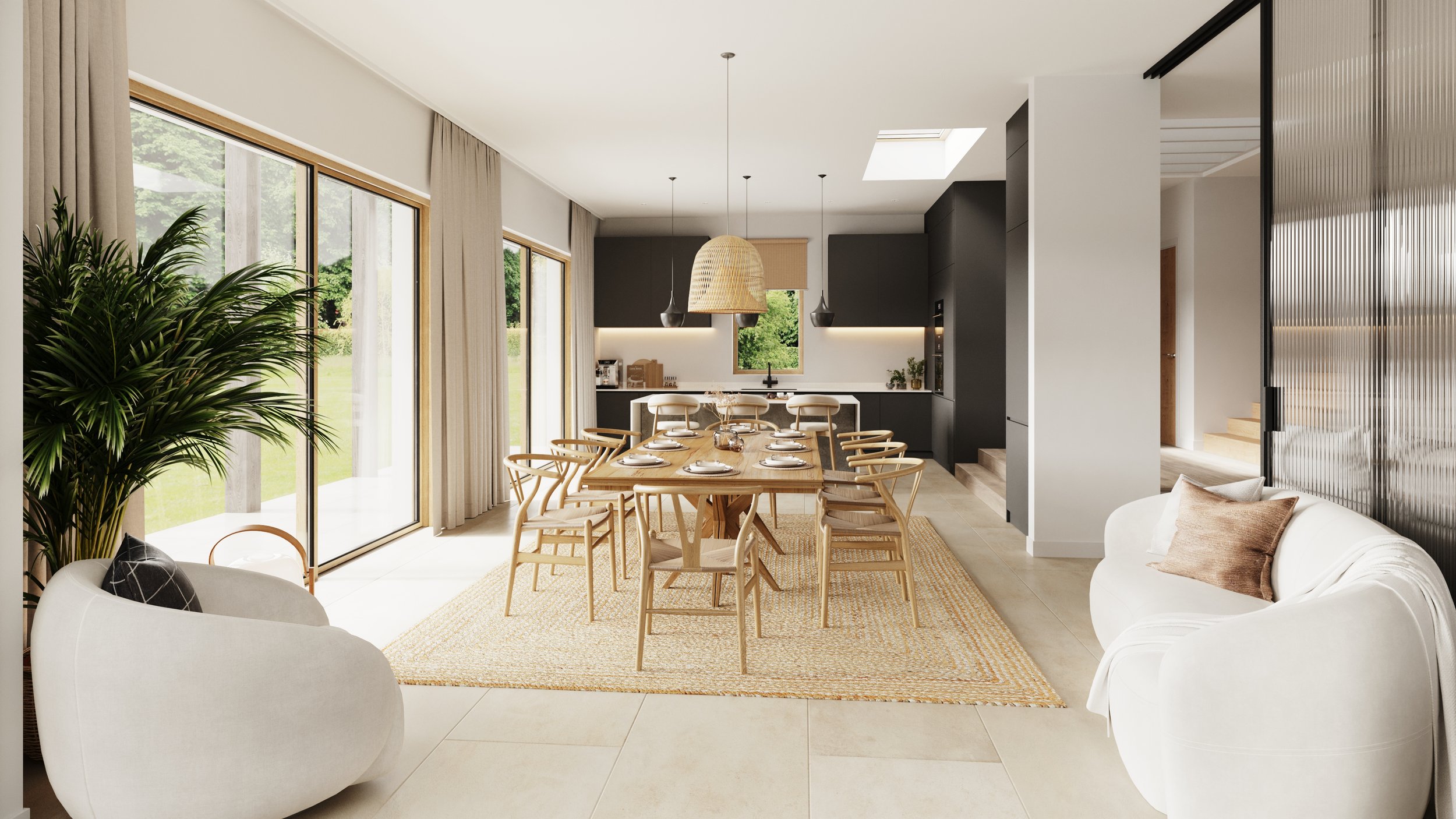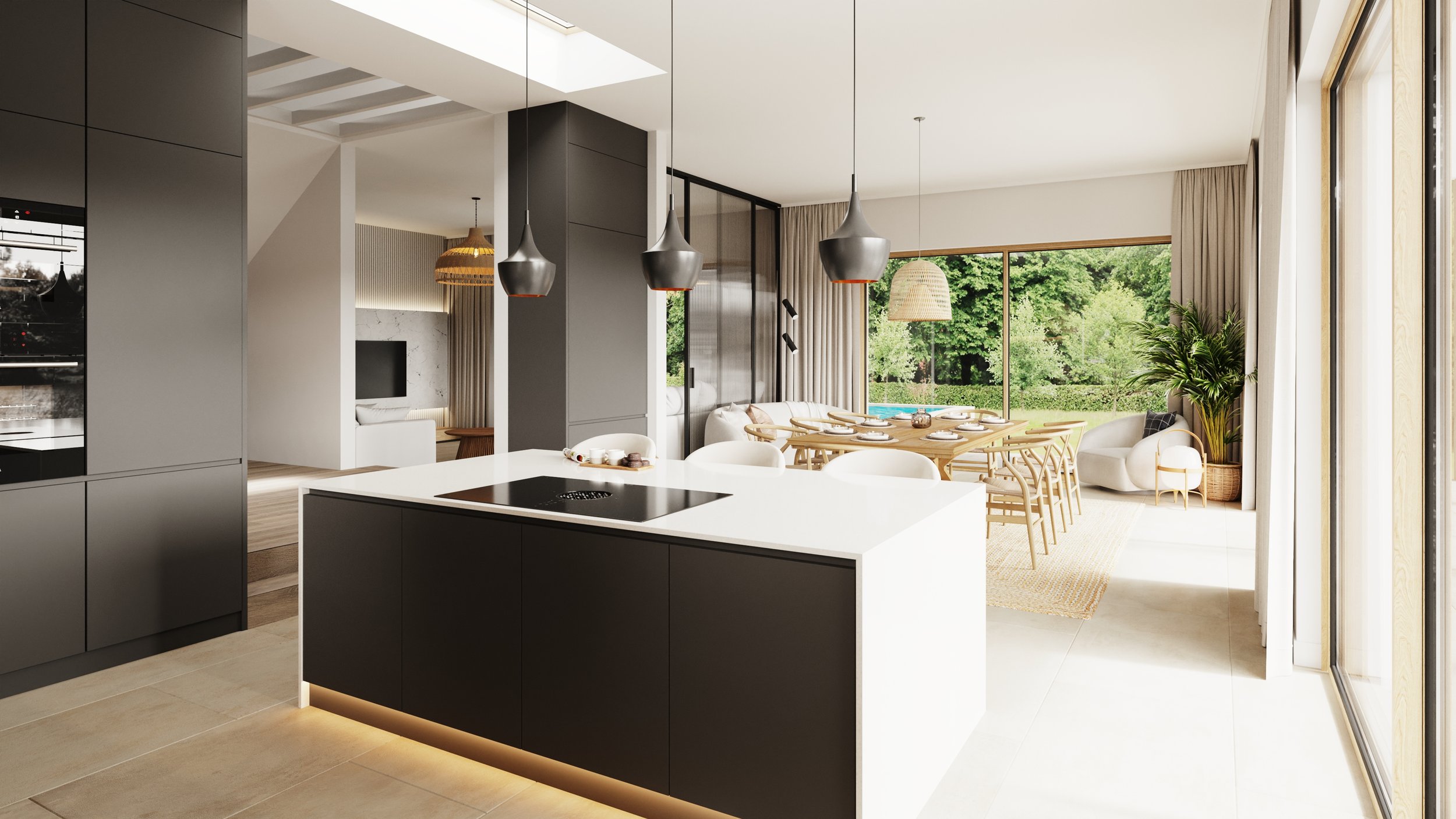long house
in the picturesque village of Regil in the Chew Valley, the family’s plot offered an amazing opportunity for a replacement eco-house with a contemporary agricultural design.
The Green Belt designation demanded strict adherence to planning regulations, and the presence of protected wildlife; specifically bats, added an extra layer of complexity.
Achieving planning permission in the Green Belt required creativity, persistence, and collaboration. Together with our clients we worked with a range of ecological and arboricultural consultants to ensure the design respected both the landscape and the local wildlife. The approach included:
Conducting seasonal bat surveys to track activity and inform the design.
Undertaking a lightspill assessment to understand the impact of the existing home and proposal on bats.
Selecting sustainable materials and a Passivhaus construction approach that will minimise environmental impact.
Designing a contemporary home with an agricultural aesthetic to blend harmoniously with its surroundings, incorporating features that support biodiversity.
Collaborating with the Local Planning Authority to address concerns and demonstrate their commitment to the environment.
After a year of careful planning and collaboration, our proposal for the family gained approval. The process was a testament to our clients' perseverance and belief in their vision. The result will be a home that not only fulfils their dreams but also stood as a shining example of how thoughtful design and respect for nature can coexist.
